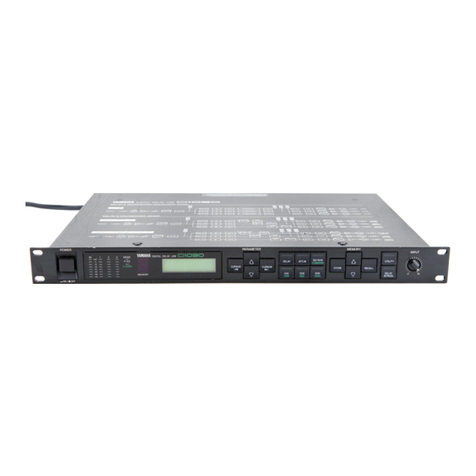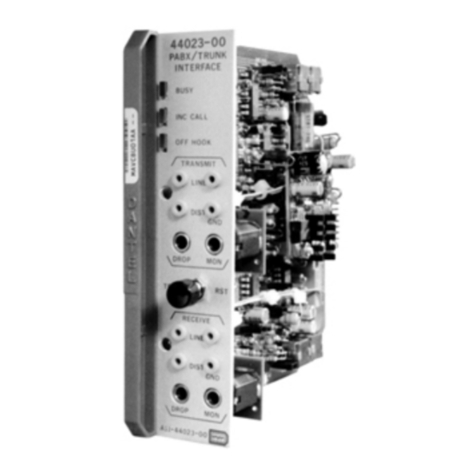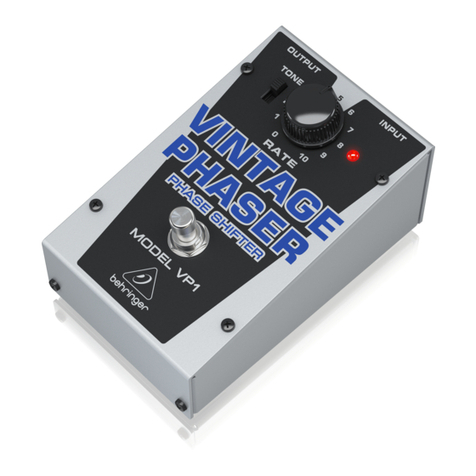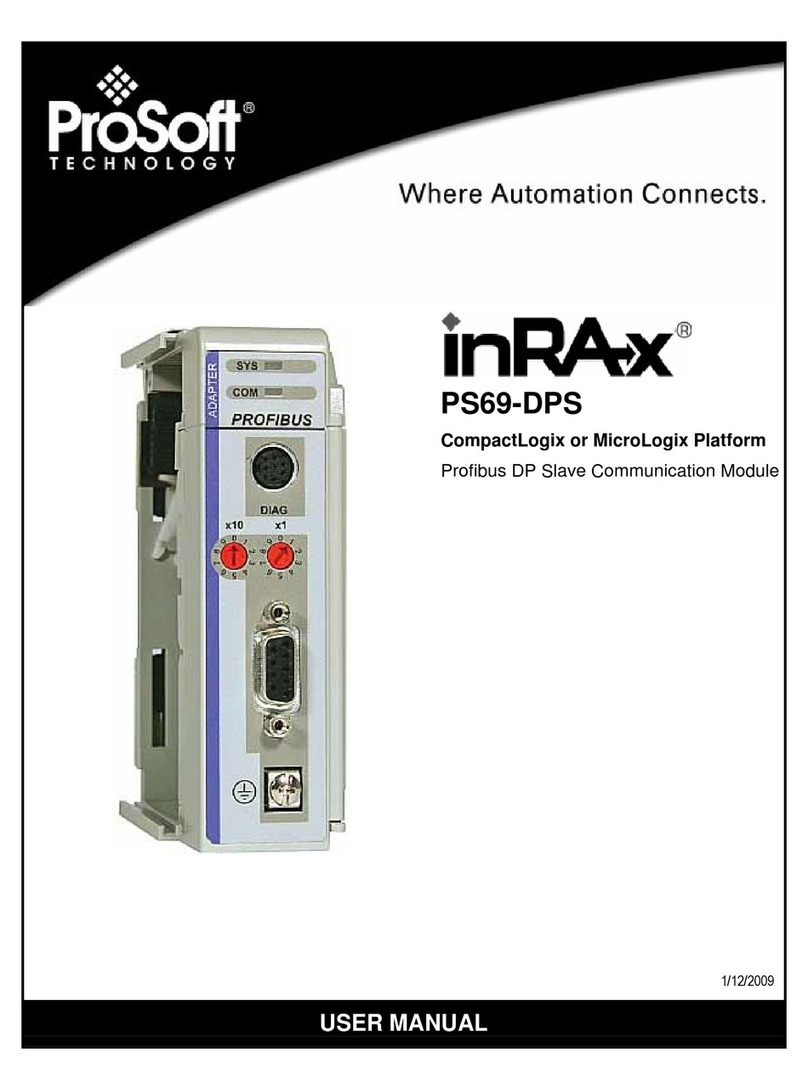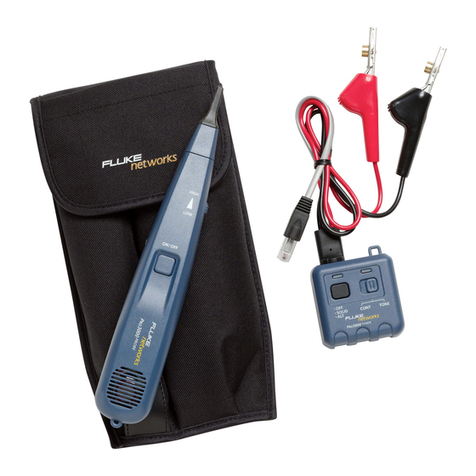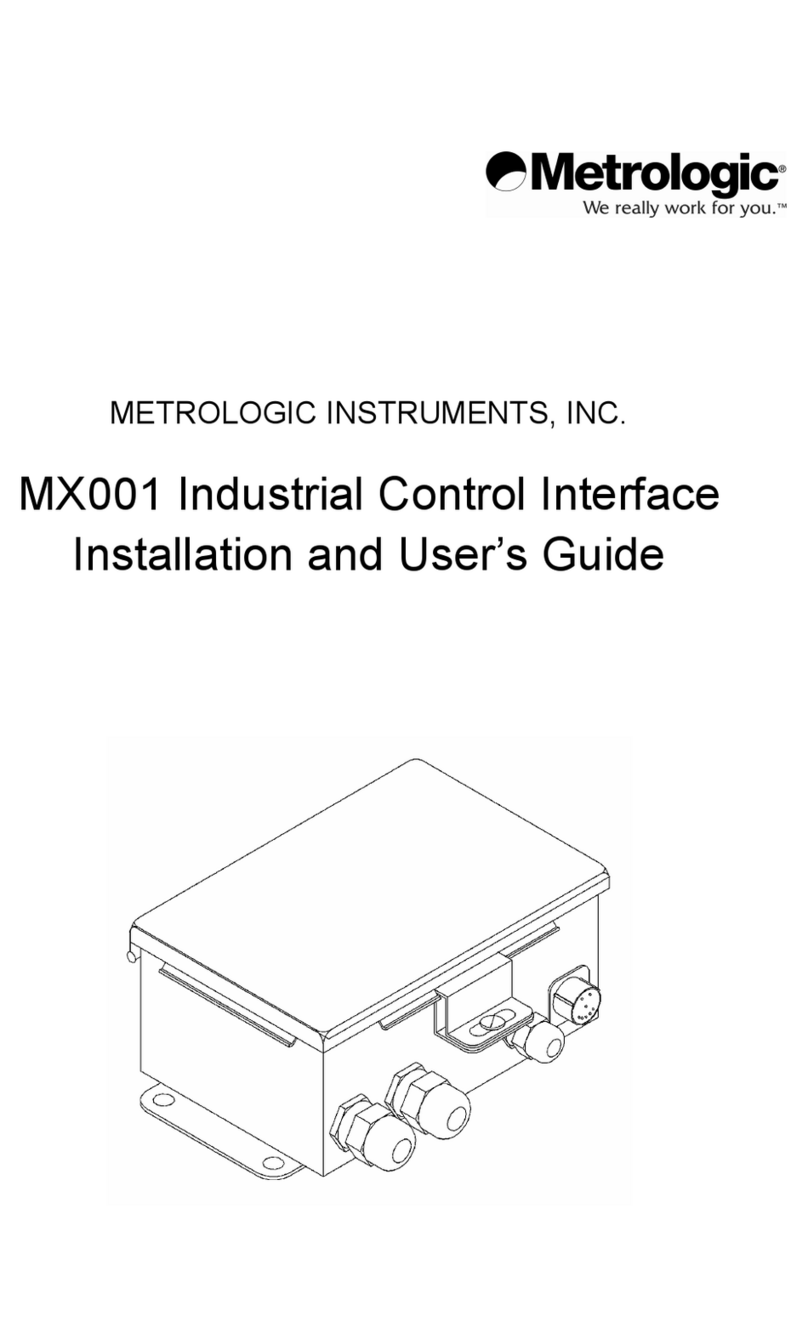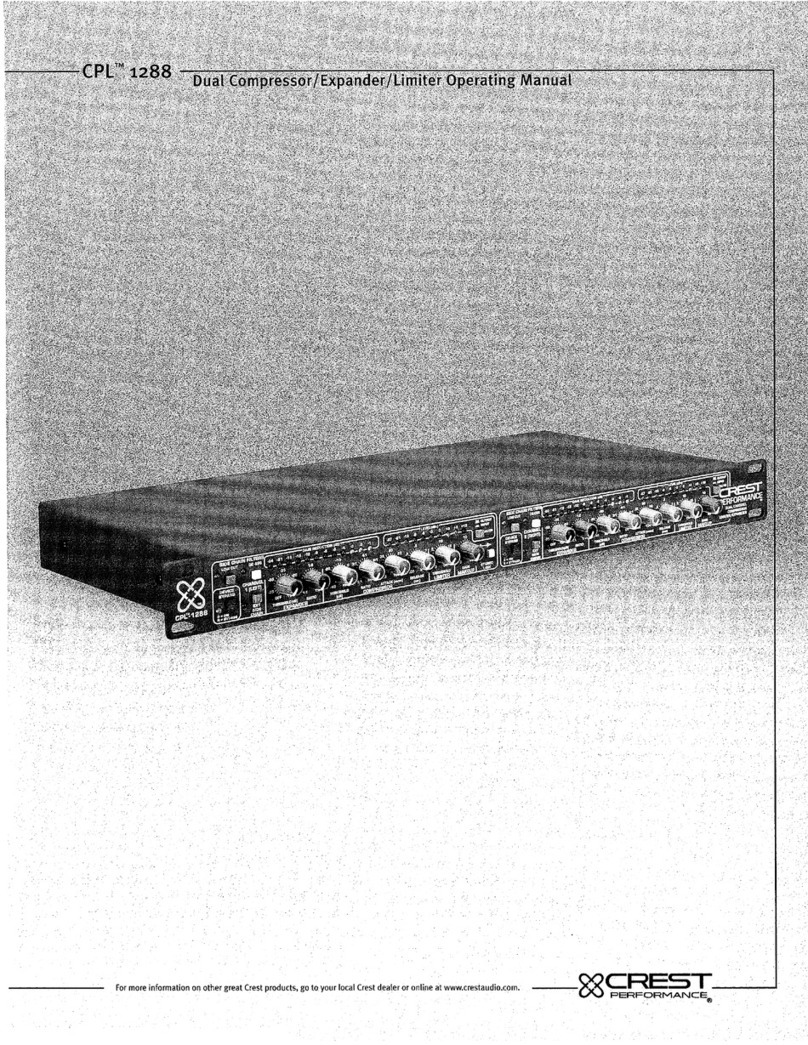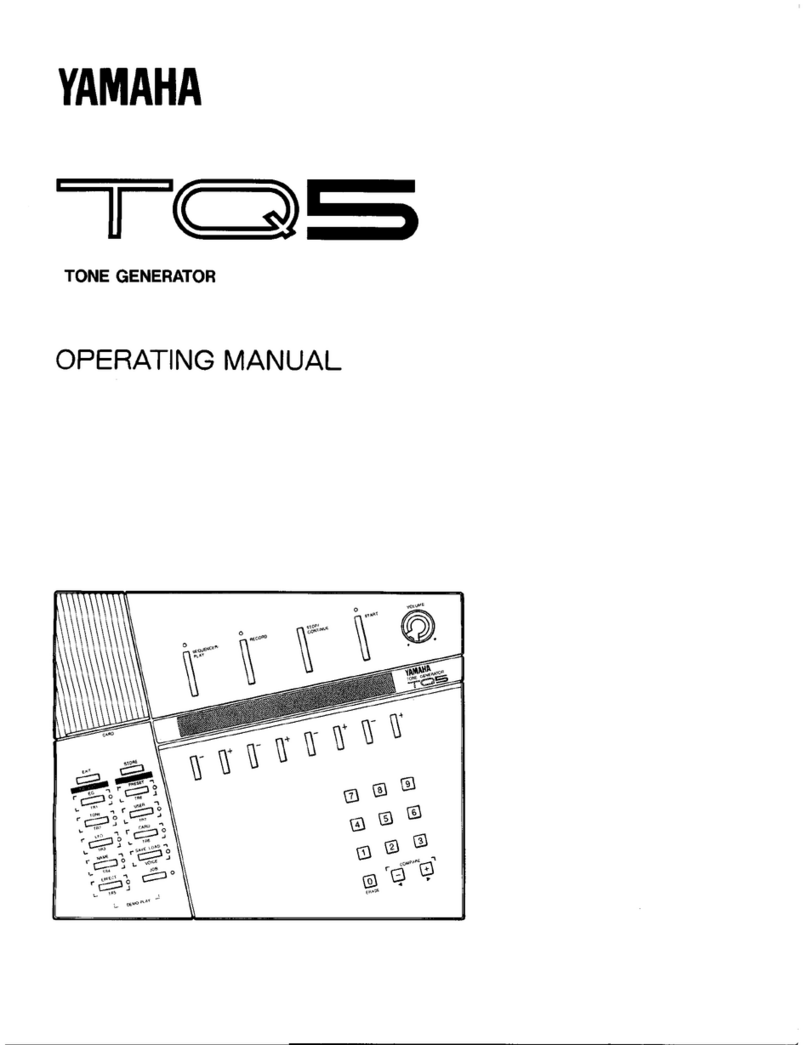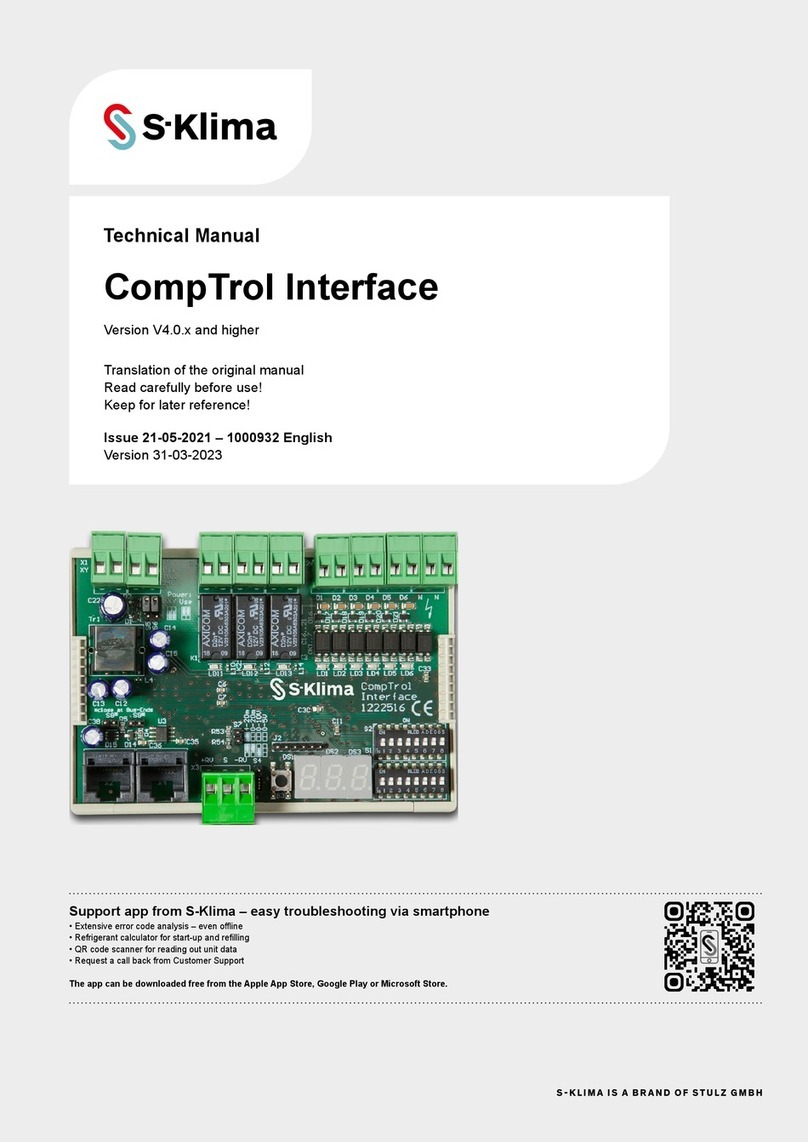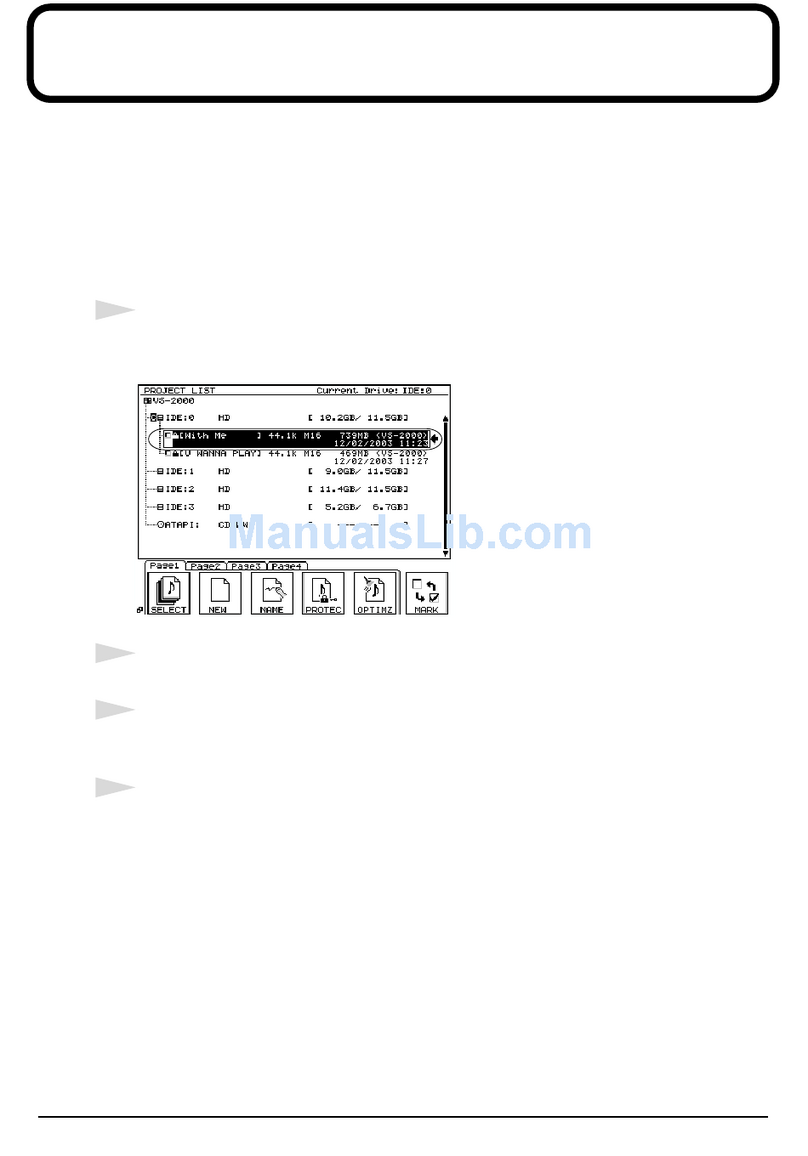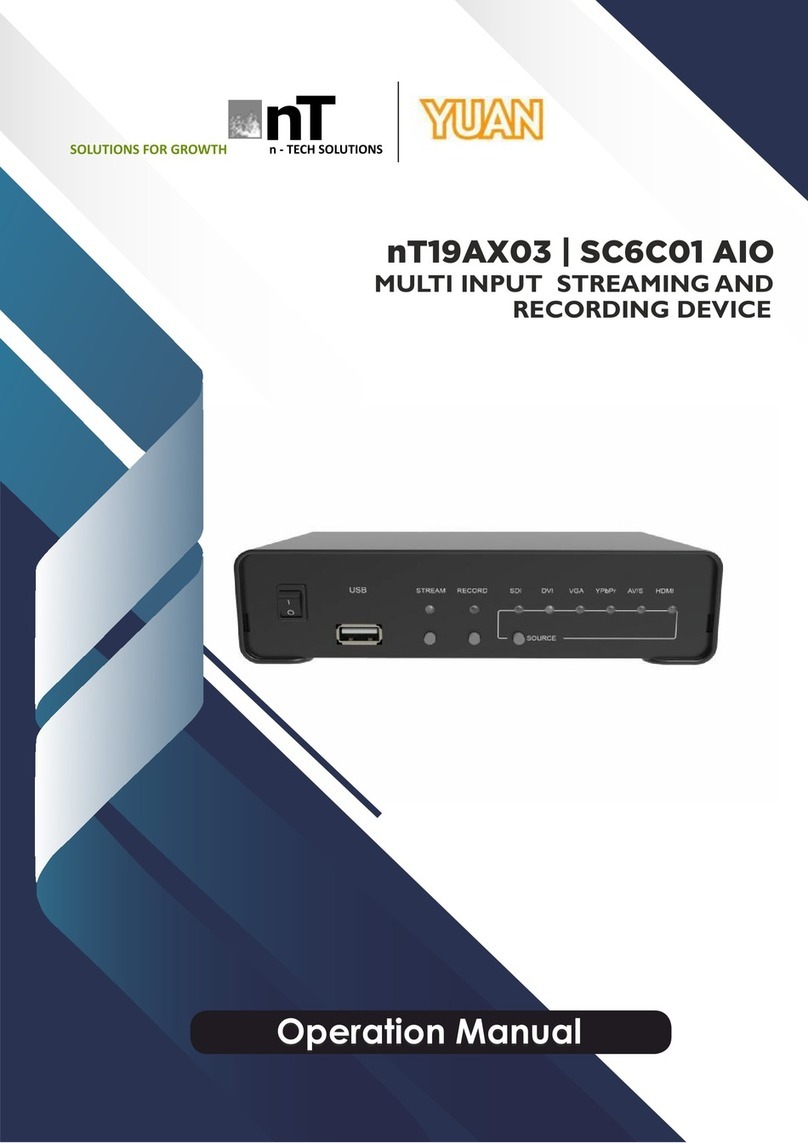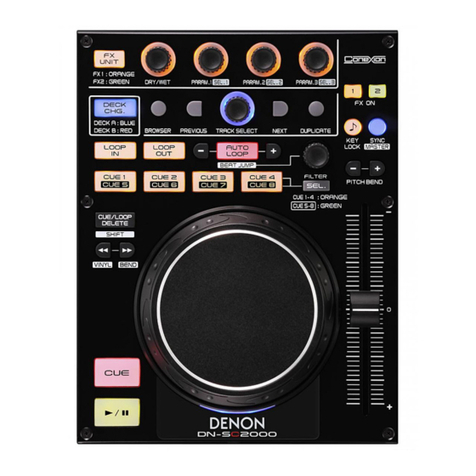SurgeX SEQ-1U User manual

© SurgeX | Technical Support: 800-645-9721 | surgex.com
SEQ / SEQ-1U
Programmable Sequencer/
Surge Eliminator/Power Conditioner
User Manual
Software Version: 2.0

© SurgeX | Technical Support: 800-645-9721 | surgex.com Page 2
SEQ/SEQ-1U User Manual
Software Version 2.0

© SurgeX | Technical Support: 800-645-9721 | surgex.com Page 3
SEQ/SEQ-1U User Manual
Software Version 2.0
1. Introduction 4
2. Features 3
3. Installation 3
3.1 120 Volt Connections 3
3.2 Remote Control Connections 4
3.2.1 Up/Down Sequence ControlInputs 4
3.2.2 Over-ride Input 5
3.2.3 External LED Connections 5
3.2.4 Confirmation Connection 5
4. Quick Start 6
5. Programming 7
5.1 Power Sequencing Control 7
5.2 Over-ride Control 8
5.3 Front Panel Push Button 8
5.4 12V DC Output 9
5.5 Auxiliary Relay 10
5.6 Out-of-Range AC Voltage Shut Down 10
5.7 Self-Test FailureShut Down 11
5.8 Restore Functions 11
5.9 Password 11
6. Applications 12
6.1 General Points 12
6.1.1 Controlling the SEQ 12
6.1.2 12V DC Output 12
6.1.3 Auxiliary Relay 13
6.1.4 Over-ride Function 13
6.1.5 Other Functions 13
6.2 Single Unit Systems 14
6.3 Expanded System 15
6.4 Ganged System 18
6.5 Cascaded System 19
7. Troubleshooting 20
8. Error Codes 20
9. Specifications 21

© SurgeX | Technical Support: 800-645-9721 | surgex.com Page 4
SEQ/SEQ-1U User Manual
Software Version 2.0
1. Introduction
The SurgeX®SEQ and SEQ-1U are 120V/20 Amp three-bank AC power sequencers incorporating SurgeX® Advanced
Series Mode®power conditioning and surge protection. The surge protection is rated A-1-1, the highest standard of the
Federal Commercial Item Description for Endurance.
Model
Size
Sequence Bank A
Receptacles
Sequence Bank
B Receptacles
Sequence Bank
C Receptacles
Always On
Receptacles
Total
Receptacles
SEQ
2 RU
4
4
4
2
14
SEQ-1U
1 RU
2
2
2
2
8
Bank C (which is next to the two always-on receptacles on the rear panel) can itself be configured to be always on,
increasing the number of always-on receptacles.
SurgeX ICE®Inrush Current Elimination circuitry is incorporated into the SEQ. This eliminates problems associated with
inrush currents from large loads such as amplifiers. With SurgeX ICE®it is not necessary to take inrush currents into
account when designing the AC power for a system, and special time-delay circuit breakers are not required: you only
need to ensurethat the steady-state currents of all productsplugged into the SEQ are within the 20 Amp rating.
The front panel houses a two-line back-lit LCD display which provides status information in normal use and allows
interaction with menu items during programming. Also on the front panel are two screwdriver-accessible rotary encoders
which are used to step through and select from a menu of items which determine the operation of the unit. The push
button, when pressed, causes the unit to power up or power down. This button can be disabled if not required. The LED
above the button indicates the status of the unit. When the LED is off the unit is fully powered down; when it is on the unit
is fully powered up; when itis flashing theunit is in the process of powering up ordown.
A built-in AC voltmeter indicates the line voltage on the LCD display. The internal voltmeter is a peak reading type which
was chosen because most electronic equipment incorporates a power supply that charges mostly during the AC peaks.
Monitoring the peak of the AC provides a more useful indication of the real voltage available to the electronic equipment
plugged into the SEQ.
The SEQ is microprocessor controlled and designed to be versatileand expandable. Two or more SEQs can be connected
together to provide control and power conditioning for larger systems. The SEQ can also control other SurgeX products
with its auxiliary relay contacts and/or its 12V dc output. All options are set via the front panel and all connections are
made at the rear panel. An optional password of up to six letters may be specified, preventing unauthorized access to set-
up information. All set-up information is stored in non-volatile memory.
A plug-in Phoenix terminal block on the rear panel accommodates the remote control connections and also the low-voltage
outputs. There are three inputs which control sequencing; one programmable 12V dc output; and one programmable
auxiliary relay providing normally-open contacts. The inputs can be controlled by an applied DC voltage from 5V to 30V, by
a contact closure, or by different types of switch; the input selection being made during programming. The inputs and 12V
output are designed to withstand incorrect connections including polarity reversal and shorts.

© SurgeX | Technical Support: 800-645-9721 | surgex.com Page 5
SEQ/SEQ-1U User Manual
Software Version 2.0
2. Features
•Unsurpassed SurgeX® Advanced Series Mode®surge elimination
•SurgeX®Impedance Tolerant®EMI/RFI filtering
•SurgeX®ICE®Inrush Current Elimination
•All-time delays and functions easily programmed from the front panel
•Bank C can be configured as always on
•Accepts both DCvoltage andcontact closurecontrol inputs
•Two or more unitscan be ganged or cascaded together for larger systems
•Programmable auxiliary relay output can beused to controlother SurgeX® products
•Programmable 12 Volt DCoutput can be used to control other SurgeX® products or drive LEDs
•Auxiliary relay or12 Volt DC output can be programmed to provide confirmation feedback
•Built-in AC Voltmeter
•Separate over-ride inputcan be used to force unitoff or forceunit on
•Optional password can be used to prevent unauthorized access to set-up information
•Adjustable under-voltage and over-voltage shut-down
•Optional restore after power failure feature
3. Installation
The SEQ is designed to be installed in a 19 inch equipment rack and requires two units (2RU) of rack space. Use the four
thumbscrews (included) to secure the rack ears to the rack rails. These screws can be tightened by hand and do not
require tools.
The SEQ-1U is designed to be installed in a 19 inch equipment rack and requires one unit (1RU) of rack space. Use the
eleven flathead screws (included) to secure the left and right rack ears to the product. Use the four thumbscrews
(included) tosecure the rackears to the rack rails.
Connect power to the unit by plugging the cord into a 120VAC, 20 Amp wall or floor receptacle. Do not plug the unit into a
re-locatable power tap.
3.1 120 Volt Connections
The SEQ has a total of 14 receptacles: three sequenced banks of four, and two always on.
The SEQ-1U has a total of 8 receptacles: three sequenced banks of two, and two always on. Each receptacle is
rated for a maximum load of 15 Amps but the total load mustnot exceed 20 Amps. Plug the equipment cords into
the receptacle banks as needed to turn on equipment in the required sequence. The “always on” receptacles
provide power as long as power is supplied to the SEQ. Bank “A” always powers up first and off last.

© SurgeX | Technical Support: 800-645-9721 | surgex.com Page 6
SEQ/SEQ-1U User Manual
Software Version 2.0
3.2 Remote Control Connections
Remote connections are wiredto the green 7-pin plug-in Phoenix terminal block on the rear of the unit next to the
power cord. The terminal block itself isshipped in the accessory bag. After you have made the connections to the
terminal block, plug it into the connector on the rear of the unit. Never solder (tin) wires before inserting in a
terminal block – solder creeps and youwill eventually have loose connections!
The connections are shown here:
3.2.1 Up/Down Sequence Control Inputs
The SEQ can be controlled by a DC voltage in the range of 5V to 30V, by a contact closure (such as a
relay), or by a switch. In this manual the terms “momentary” and “latching” are used when describing
switches. A momentary switch is considered to be a switch which provides a connection only while it is
actually held pressed, and a latching switch is considered to be a switch which remains in either the on
or the off state (like a light switch). Momentary switches are preferred for use with the SEQ since
multiple control locations can be used, and also because some of the functions of the SEQ are not
available when a latching switch is used (see programming section). Switches with gold contacts are
recommended for the best long-term reliability. The type of input is selected totally through
programming, making the electrical connections straightforward. The six control options are discussed
below:
a) DCVOLTAGE: The SEQ will power up when the voltage is present and power down when there is no
voltage. Connect the positive wire to the “Up” input, and the ground (or negative) wire to “Common”.
Program the input for “5-30 V DC”.
b) CONTACT CLOSURE: The SEQ will power up when the contacts are closed and power down when
the contacts are open. Connect the two wires from the contacts to “Up” and “Common”. Program
the input for “Latching”.
c) MOMENTARY SWITCH(ES): The SEQ will power up when a switch is pressed once and power down
when a switch is pressed a second time. Connect the two wires from the switch(es) to “Up” and
“Common”. Program the input for “Momentary”.
d) SEPARATE UP &DOWN SWITCHES: The SEQ will power up when the UPswitch is pressed and power
down when the DOWN switch is pressed. Connect the two wires from the UP switch to “Up” and
“Common”, and the two wires from the DOWN switch to “Down” and “Common”. Program the input
for “Separate Up & Down”.
e) CENTER-OFF SWITCH: The SEQ will power up when the switch is pressed to the UP position and
power down when the switch is pressed to the DOWN position. Connect the wire from the UP
terminal to “Up”, the wire from the DOWN terminal to “Down”, and the wire from the COMMON
terminal to “Common”. Program the input for “Separate Up &Down”.
f) LATCHING SWITCH: The SEQ will power up when the switch is closed and power down when the
switch is open. Connect the two wires from the switch to “Up” and “Common”. Program the input for
“Latching”.
Note: The front panel button will not operate with options a, bor f
Pin 1 – Up Input
Pin 2 – Down Input
Pin 4 – 12 V DC Output
Pin 5 - Common
Pin 6 – Aux Relay Contact
Pin 7 – Aux Relay Contact
Pin 3 – Over-Ride Input

© SurgeX | Technical Support: 800-645-9721 | surgex.com Page 7
SEQ/SEQ-1U User Manual
Software Version 2.0
3.2.2 Over-Ride Input
The SEQ has the option of adding an over-ride function for purposes such as providing fire safety over-
ride to force thesystem either on oroff. An over-rideis initiated by applying a dc voltage of5-30V or by a
sustained contact closure. The selection of dc voltage or contact closure is accomplished during
programming. This topic is covered fully in the programmingsection.
Connect the over-ride signal to the “over-ride” input and “common”. In the case of a dc voltage, connect
the positive wire to “over-ride” and the negative wireto “common”.
3.2.3 External LED Connections
The SEQ is able to drive external LEDs or other signaling devices through its 12V DC output which can
provide up to 40mA of current. External LEDs connected in this way will mimic the LED on the front
panel. When connecting LEDs to the 12V output, a series resistor is required. For example, many LEDs
work well with 10mA of current, so a 1K resistor is usually a good choice. If more than one LED is
required, then use a separate series resistor for each LED. In this example, four external LEDs could be
powered at 10mA each from one SEQ. If more than four LEDs are required, it will be necessary to
increase the series resistor so that the total load is not more than 40mA.
Connect each LEDanode to “12V DC output” through a resistor, andthe cathodes to “Common”.
Program the 12V DC Output for “LED”. This causes LEDs connected to the SEQ to flash while the unit is
powering up orpowering down in the same manner as the front panel LED.
3.2.4 Confirmation Connection
The SEQ offers two ways to provide confirmation feedback to a central controller: a 12V DC output and
isolated relay contacts. Confirmation tells the controller that the SEQ has indeed powered up or that it is
fully powered down. If the 12V DC output and the Aux Relay contacts are not used for any other
function, you will be free to choose whichever provides the best interface for the application. However, if
one of these outputs is usedfor another functionyou will have to use the one that is available.
To use the 12V DC output for confirmation, connect “12V DC output” to the positive input of the
controller and “Common” to ground. The output will be at 12V when all banks are powered up and will be
zero when all banks are powered down. Program 12V DC Output for “Confirm”. Note that the SEQ
common terminal is shared between the inputs and the 12V DC output. If you need relay contacts for
confirmation and you are using the Aux Relay for another function you can connect a small relay
between the 12V DC output and common. The relay coil current must not be more than 40mA, and you
must connect a diode such as a 1N4148 or 1N4002 across the relay coil (cathode to +12V dc) to
suppress the back-EMF from the coil. If you need assistance with this please contact our technical
support department.
To use the Auxiliary Relay contacts for confirmation, connect the contacts to the input of the controller.
The relay contacts will be closed when all
banks are powered up and open when all
banks are powered down. The default for menu
item “Aux Output” is “Confirm” so you do not
need to program this item unless you
previously changed it. The contacts are rated
for 30V DC at 1 Amp.

© SurgeX | Technical Support: 800-645-9721 | surgex.com Page 8
SEQ/SEQ-1U User Manual
Software Version 2.0
4. Quick Start
This section is intended to allow users with a simple straightforward system incorporating a single SEQ to get up and
running with minimum effort. If this is not the case then skip this section and go directly to the section on detailed
programming (Section 5). If you are going to follow the quick start instructions, you only need to perform the following
steps since the unit has been shipped with default settings suitable for basic operation.
1. Make all connections as per Section 3.
2. Insert a screwdriver in the hole labeled SEL and turn it one click clockwise. Press the front panel
button and you will see the first menu item “Bank C Function” on the display. Leave this set to
Sequence unless you want to use Bank C as Always On receptacles. In that case insert the
screwdriver inthe hole labeled ADJ and turn one click clockwise to change it to Always On.
3. Advance SEL one click to get the second menu item “Up & Down Inputs”. Select the option
required for theinstall by referring to section 3.2.1 andset the option by rotating ADJ.
4. Advance SEL one more click. You will now be able to set the first delay time which is for bank A
powering up. Use ADJ to set the required delay time in seconds.
5. Advancing SEL one click at a time and using ADJ to adjust the delay times, set the remaining five
delay times: B on, C on, A off, B off, C off. If you have set Bank C to be Always On skip the delay
settings for Bank C.
6. If you have connected an LED to the 12V DC output for remote signaling, step through the menu
until you reach “12V DC Output”. Then advance ADJ to select “LED”. This selection will make the
remote LED mimic the LED on the front panel which flashes while the unit is powering up or
powering down.
7. Turn SEL fully counter-clockwise and press the button to exit programming. Place two of the black
plugs from the accessory kit into the adjustment holes to deter tampering and the unit is ready for
use.
Although the above steps are all that are required to get the SEQ running, you may want to take a look at the following
programming options to see if you want to make use of any of these functions. You will find these listed on the reverse
side of the Programming and Connection Guide, and they are near the end of the menu that you step through by turning
SEL.
Programming Option
Description
Low Voltage Shutdown
Shuts unit offif AC voltage drops belowthe set point
High Voltage Shutdown Shuts unit offif AC voltage rises above the set point
Self-Test Shutdown Shuts down unit if self-test fails
Power Fail Restore
Turns unit back on after a power failure if unit was powered up when the power
failed

© SurgeX | Technical Support: 800-645-9721 | surgex.com Page 9
SEQ/SEQ-1U User Manual
Software Version 2.0
5. Programming
The SEQ is a very versatile sequencer and has 25 menu items that control its operation. Some menu items allow
predetermined options to be selected and others allow time delays or voltage limits to be adjusted. All adjustments are
made via the front panel and are achieved by turning the two screwdriver-accessible rotary encoders labeled SEL (select)
and ADJ (adjust). Turning SEL steps through the menu (shown on the first line of the display), and turning ADJ allows
each menu item tobe changed (shown on the second line of the display).
To enter the programming mode first turn SEL one click clockwise. The display will then tell you to press the front panel
button. This puts you into the programming mode. All the options, delay times and voltage adjustments are set using this
mode. When you have completed the set-up turn SEL counter-clockwise until the display tells you to press the button
again. Doing so saves the new set-up information in non-volatilememory and puts youback into normal operation.
A password can be set while in the programming mode. Once a password has been set, you need to enter the same
password before you can get back into the programming mode again. This prevents unauthorized personnel from
changing the set-up information. The passwordoption is the last menu item and canbe from one to six letters (A-Z).
You must be sure to remember the password once it is set as the only way to erase it is to erase all the set-up
information stored in the non-volatile memory. Please consult the factory to get instructions if you ever need to
do this.
The instructions and notes that follow are in the same orderas the actual menu items.
5.1 Power Sequencing Control
The following eight menu items must be set before the SEQ can be used in a system. These determine the
function and delay times of the sequenced banks, and the type of control input: DC voltage, contact closure or
switch. Pleasesee Section 3.2.1 for details.
Menu Item
Options
Description
Bank C Function
Sequence
Bank C is sequenced normally
Always On
Bank C is no longer sequenced On and Off
Up & Down Inputs
Momentary
Use with momentary switch(es)
Separate Up &
Down
Use with separate switches for Up and Down
Latching
Use with a latching switch or contact closure
5-30V DC
Use with an applied DC voltage of 5 to30 Volts
Delay A, B, C On
1 – 40
Seconds
Set power-up delay time for each bank
Delay A, B, C Off
1 – 40
Seconds
Set power-down delay time for each bank

© SurgeX | Technical Support: 800-645-9721 | surgex.com Page 10
SEQ/SEQ-1U User Manual
Software Version 2.0
5.2 Over-Ride Control
The SEQ has an optional over-ride and four menu items that control this function. If you do not require an over-
ride, you can skip the next four menu items since units are shipped with this function disabled. The over-ride can
be used for such purposes as fire safety over-ride, and can be set to either force the unit on or force it off when
an over-ride signal occurs. The over-ride input is also used for feedback when two or more SEQs are cascaded
together. This is covered in the applications section.
Menu Item
Options
Description
Over-Ride Input
Contact Closure
Use with relay contacts orlatching switch
5 – 30V DC
Use with an applied DC voltage of 5 to30 Volts
Over-Ride Func
Disable
Disable over-ride ifnot required
Force On
Force unit On when over-ride is applied to input
Force Off
Force unit Offwhen over-ride is applied to input
Master
Use when unit is the masterin a cascaded chain
Pass-Thru
Use when unit is an intermediate unitin a chain
Over-Ride Option
Use Main Delays
The main delays are used when an over-ride occurs
Special Delay
The special delay is used when an over-ride occurs. Aspecial
delay should notbe used when the Aux Relay is used to provide a
fourth sequenced bank, as the sequencing betweenthe fourth
bank and the three main banks during an over-ride may not
coordinate correctly.
Over-Ride Delay
0 – 30 Seconds
Set delay time to be used only during an over-ride
5.3 Front Panel Push Button
The front panel push button allows the unit to be powered up or powered down from the front panel. There is one
menu item associated with the push button which allows it to be disabled or to operate only after a one second
delay. The delay option prevents the unit inadvertently powering on or off if the push button is accidentally
bumped. Note that the push button cannot be used in conjunction with applied voltage or latching type remote
control inputs.
Menu Item
Options
Description
Front Panel
Button
Enable
Front panel button is enabled
Delay
Button has a 1second delay
Disable
Front panel button is disabled

© SurgeX | Technical Support: 800-645-9721 | surgex.com Page 11
SEQ/SEQ-1U User Manual
Software Version 2.0
5.4 12V DC Output
The programmable 12V DC output provides a nominal 12 Volts at up to 40mA of direct current and is available at
the rear of the unit. The 12V DC output can be used to provide confirmation to a central controller, to control
another power distribution product, to drive LEDs, or to provide feedback to the previous SEQ in a cascaded
chain. Please see the applications section for full details on setting up an expanded system. There are three
menu items to control the 12V DC output: one to select the mode of operation, and two to set the delay times.
The two delay times are onlyapplicable when option A, B, or C is selected for 12V DC Output. There is additional
information on the 12V DC output in Sections 3.2.3 and 3.2.4. If the DC output is not used it can be left at any
setting.
Menu Item
Options
Description
12V DC Output
Confirm
Output providesconfirmation to a controller
A
Output synchronized with Bank A
B
Output synchronized with Bank B
C
Output synchronized with Bank C
LED
Flashes while powering Up and Down to drive LEDs
Cascade
Provide feedback to the previous cascaded unit
12V Delay On
0 – 40 Seconds
Set power-up delay time when set to A, B, or C. This delay time
begins with the same internal trigger as the bank selected in the
previous item. Forexample,if you wanteda fourth bank to power
on first and off last, you should select A asthe 12V DC Output
and set this delay time to be shorter than the delay that you set
for Main Bank AOn (the 12VDelay On can be set to zero in this
case); or if you wanted a fourth bank to power on last andoff first,
you should select C as the 12V DC Output and set this delay time
to be longer than the delay that you set forMain Bank C On.
12V Delay Off
0 – 40 Seconds
Set power-down delay time when setto A, B, or C. This delay
time begins with the same internal trigger as the bank selected in
12V DC Output. For example, if you wanted a fourth bank to
power on first and off last,you should select A as the12V dc
Output and set this delay time to be longer than thedelay that you
set for Main Bank A Off; or if you wanted a fourthbank to power
on last and off first, you should select C as the 12V DC Output
and set this delay time to be shorter than the delay that you set
for Main Bank COff (the 12VDelay Off canbe set to zero in this
case).

© SurgeX | Technical Support: 800-645-9721 | surgex.com Page 12
SEQ/SEQ-1U User Manual
Software Version 2.0
5.5 Auxiliary Relay
The programmable Auxiliary Relay provides a single normally-open contact which is available at the rear of the
unit. The aux relay can be used to provide confirmation to a central controller, to control another power
distribution product, or for controlling another SEQ when two or more are ganged or cascaded together. Please
see the applications section for full details on setting up an expanded system. There are three menu items to
control the aux relay: one to select the mode of operation, and two delay times. The two delay times are only
applicable when option A, B, or C is selected for Aux Output. There is additional information on the aux relay in
section 3.2.4.
Menu Item
Options
Description
Aux Output
Confirm
Relay contacts provide confirmation to a controller
A
Contacts synchronized with Bank A
B
Contacts synchronized with Bank B
C
Contacts synchronized with Bank C
Gang
Provide control to the next ganged unit
Cascade
Provide control to the next unit in a cascaded chain
Aux Delay On
0 – 40 Seconds
Set power-up delay time when set to A, B, or C. This delay time
begins with the same internal trigger as the bank selected in the
previous item. Forexample,if you wanteda fourth bank to power
on first and off last, you should select A as the AuxOutput and set
this delaytime to be shorterthan the delay that you set for Main
Bank A On (the Aux DelayOn can be set tozero in this case); or if
you wanted a fourth bank to power on last and off first, you should
select C as the Aux Output and set this delay time to belonger
than the delay that you set for Main Bank C On.
Aux Delay Off
0 – 40 Seconds
Set power-down delay time when setto A, B, or C. This delay time
begins with thesame internal triggeras the bankselectedin Aux
Output. For example, ifyou wanted a fourth bank to power on first
and off last,you should select A as the Aux Output and set this
delay time to be longer than the delay that you set for Main Bank A
Off; or if you wanted a fourthbank to power on last and off first,
you should select C as the Aux Output andset this delay time to
be shorter than the delay that you set for Main Bank C Off (the Aux
Delay Off can be set to zero in thiscase).
5.6 Out-of-Range AC Voltage Shut Down
The SEQ has built-in line voltage monitoring and out-of-range shut down. The default limits are 90V at the low
end and 150V at the high end, and the shut down sequence begins if the line voltage remains outside the set
limits for 1 second or more. These limits are adjusted by using two menu items, with the low limit adjustable from
90V to 110V and the high limit adjustable from 130Vto 150V. If the unit has shut down due to an out-of-range line
voltage and the line voltage subsequently returns to normal, the power up sequence will only resume if the Power
Fail Restore option (section 5.8) has been set to “Enable”.
Menu Item
Options
Description
Low Volt Shut Down
90 – 110 VAC
Set low voltageshut down point
High Volt ShutDown
130 – 150 VAC
Set high voltage shut down point

© SurgeX | Technical Support: 800-645-9721 | surgex.com Page 13
SEQ/SEQ-1U User Manual
Software Version 2.0
5.7 Self-Test Failure Shut Down
The SEQ circuitry has integral self-monitoring which tells the microprocessor that the surge protection is on-line
and operating within specification. This menu item allows an option to be selected so that the unit will begin the
power down sequence should the self-test ever fail.
Menu Item
Options
Description
Self-Test Shut
Down
Disable
Banks will notbe powered offif self-test fails
Enable
Banks will be powered off if self-test fails
5.8 Restore Functions
There are two menu items which, when enabled, allow the SEQ to restore the original “on” condition after shut-
down caused either by loss of AC power (or out-of-range AC) or by an over-ride. When these options are
disabled, the SEQ will not power up when the condition that caused the shut down goes away. The restore
functions cannot be used in conjunction with applied voltage or latching type remote control inputs.
Menu Item
Options
Description
Power Fail
Restore
Disable
Banks will remain off aftera power failure
Enable
Restore the original status after a power failure
Over-Ride
Restore
Disable
Original statuswill not be restored after an over-ride
Enable
Original statuswill be restored after an over-ride
5.9 Password
A password can be set whichwill prevent unauthorized access to the programming mode. From one to six letters,
A through Z,can be used as apassword.
It is important to remember the password because, once it has been set, you cannot get into the
programming mode again without entering the password. If you do forget the password, the only way to
erase it is to erase all the set-up information. If you ever need to do this, please call the factory to obtain
instructions.
When you select Password in the menu you will see a blinking cursor on the bottom line of the display. Set the
first letter of the password by turning ADJ. Then advance SEL one click so that the cursor moves to the next
position and repeat the process until you have setall the letters of your chosen password.
To erase a password set the cursor on the first letter and turn ADJ counter-clockwise untilyou see only the cursor
and no letter above it. Then turn SEL one click back. It is not necessary to erase each letter; erasing the first letter
erases the whole password.
Menu Item
Options
Description
Password
A - Z
Set optional password of up to sixletters. Set each letter withADJ
and advanceSEL to go to thenext letter.

© SurgeX | Technical Support: 800-645-9721 | surgex.com Page 14
SEQ/SEQ-1U User Manual
Software Version 2.0
6. Applications
The SEQ can be used in four types of configuration: a single unit providing three sequenced banks; an expanded system
where the SEQ controls remote turn-on SurgeX products providing four or five sequenced banks (or three banks with
increased current capacity on extra units); a ganged system where two or more SEQs are connected together such that
they all turn on and off at the same time providing three banks with increased current capacity for all three banks; a
cascaded system where twoor more SEQs are connected together such that the banks turn on sequentially from one SEQ
to the next SEQ. Each configuration is covered separately in its own section, but first there are some general points which
apply to all types ofinstallation.
6.1 General Points
This Section provides detailed information aboutthe remote control connections. If you have not already done so,
please read Section 3.2 before continuing. The information in Section 6.1 applies to all types of installations and
you should also read thissection before continuing further.
6.1.1 Controlling the SEQ
The SEQ is primarily designed to be used with momentary action switches. A momentary switch is a
switch where the contacts are closed only while the switch is actually pressed, such as a push switch.
Using momentary switches allows several switches to be connected in parallel so that the SEQ can be
controlled from multiple locations. A single push switch would cause the unit to power-up on the first
press and then power down on the second press. A dual momentary switch, such as a center-biased
rocker, or two separate push switches (one for UP and the other for DOWN), can also be used with
equal versatility. It is up to the installer to choose the configuration. Whatever type of switch is used,
switches with gold contacts are recommended for the best long-term reliability.
Where there are multiple control locations it is advantageous to use the 12V dc output to drive LEDs so
that there is an LED at each control location. Up to four LEDs running at 10mA each can be powered
from the 12V dc output. Each control location then has an indication of the operational status of the SEQ
regardless of which location last initiated power-up or power-down.
The SEQ also supports latching switches, contact closure and applied DC voltage, but these types of
input cannot be used with multiple control locations – they are intended primarily for a small system or
for hook-up to a central controller. The front-panel push-button will not work with a latching switch,
contact closure or applied voltage inputs.
6.1.2 12V DC Output
The 12V DC output can be used to drive LEDs, thereby showing the operational status at remote control
locations. This output can drive up to 40mA which can power four LEDs at 10mA each, or more LEDs at
reduced current. A resistor is required for each LED to limit the current. The 12V DC output can also
provide confirmation to a central controller or be used to drive a small relay (40mA maximum coil
current). The 12V DC output can be configured to control an external bank of equipment as an
alternative to or in addition to the Aux Relay. See Section 3.2 for connection details and Section 5.3 for
programming details.
The 12V DC output has a special use when SEQs are cascaded together – this is covered in the section
on cascaded systems.

© SurgeX | Technical Support: 800-645-9721 | surgex.com Page 15
SEQ/SEQ-1U User Manual
Software Version 2.0
6.1.3 Auxiliary Relay
The primary uses of the aux relay are to control other remote turn-on products or to provide status
feedback to a central controller to confirm that the unit has completed the requested operation. Details of
using the aux relay to control other products are covered in the specific applications sections. The aux
relay provides one normally-open contact at the rear terminal block and can handle 1 Amp at up to 30
Volts DC. See Section3.2 for connection details and Section5.4 for programming details.
The aux relay has a special use when SEQs are ganged or cascaded together – this is covered in the
sections on ganged and cascaded systems.
6.1.4 Over-Ride Function
The SEQ has an over-ride function that can be used for fire safety and other applications where the
power must be held on or forced off. The over-ride function is programmable so that it can be set to
either force the unit off or force it on. When a signal is applied to the over-ride input the unit will be
forced on or off regardlessof the main inputs.
If the unit has been forced off by an over-ride, the Over-Ride Restore menu option determines whether
the unit will power up again orremainoff.
There is a special delay which can be used only with an over-ride condition. This allows a faster turn on
(or turn off) than the main delays. It is not recommended to use the special delay with expanded
systems because the auxiliary bank may not turn on (or turn off) in the correct sequence during an over-
ride condition.
The over-ride input can be programmed to accept either a contact closure or applied DC voltage. See
Section 3.2 forconnection details and Section 5.2 for programming details.
The over-ride input has a special use when SEQs are cascaded together. This is covered in the section
on cascaded systems. If an over-ride is required with a ganged system, use the over-ride input on the
first SEQ. If an over-ride is required with a cascaded system, use theover-ride input on the last SEQ.
6.1.5 Other Functions
Reading through the programming section is a good way to understand all the functions and options
available in the SEQ. Most of the functions are associated with main operation outlined in this section
above. However, there are some otherindependent functions that can beselected:
The front panel button can be programmed to be operational, non-operational or operate after a one-
second delay. Choosing the last setting prevents accidental power-up or power-down. See Section 5.5
for more details.
The SEQ has built-in voltage limits that will cause the unit to power down if the line voltage is outside
these limits. The low limit can be set from 90V to 110V and the high limit can be set from 130V to 150V.
See Section 5.6 for moredetails.

© SurgeX | Technical Support: 800-645-9721 | surgex.com Page 16
SEQ/SEQ-1U User Manual
Software Version 2.0
The SEQ has internal self-testcircuitry that constantly monitors the operation of the unit and displays the
word “Good” or “Fail” on the front panel. The unit can be programmed to shut down in the unlikely event
that the self-test should fail. See Section 5.7 for more details.
There are two “Restore” options. The first option allows the unit to restore to a power-on state after loss
of AC power or out-of-range AC voltage. The second option allows the unit to restore to a power-on
state after being forced offby an over-ride. See Section 5.8 for more details.
6.2 Single Unit System
Most of the information necessary to install and set up a single unit system can be found in Sections 3.2 and 6.1.
Figure 1 shows a single unit system controlled by momentary switches at three different locations, and Figure 2
shows a single unit controlled by a central controller.

© SurgeX | Technical Support: 800-645-9721 | surgex.com Page 17
SEQ/SEQ-1U User Manual
Software Version 2.0
6.3 Expanded System
A basic expanded system consists of an SEQ in combination with a remote turn-on SurgeX such as the SX1120-
RT or the SX20-NE/RT. Such a system provides a total of four banks and 40 Amps total load capacity. The
auxiliary relay inside the SEQ is normally used tocontrol the second unit although the 12V DC output can also be
used for this purpose. The only difference in these remote control configurations is that, when the aux relay is
used to control a second unit, it cannot be used for confirmation feedback to a central controller, and when the
12V dc output is used forcontrol it cannotbe used todrive LEDs.
If more current capability is required, additional SurgeX RT products can be connected to the second unit.
Connect pins 6& 7 of the second unit to pins 1 & 2 of the third unit, and so on.
It is possible to configure a five bank expanded system by using both the aux relay and the 12V dc output to
simultaneously control two separate pieces of equipment or two racks of equipment. In this case, refer to Figures
3, 4 & 5 and follow the instructions below.
The SEQ in an expanded system can be controlled by the same inputsas a single unit system.
Figure 3 (page 16) shows how the two units are wired together using the aux relay contacts. The aux relay
contacts on the SEQ (terminals 6 & 7) are connected to the contact closure inputs at the back of the RT
(terminals 1 & 2). In order to work as a 4-bank system the aux relay must be programmed accordingly. The Aux
Output menu item must be set to A, B or C. This synchronizes the aux relay to one of the internal triggers used
for main banks A, B or C. The Aux Delay On and Aux Delay Off delay times are then set to position the 4th bank
wherever it is required to be in the sequence. As an example: if an SX1120-RT, connected to an SEQ, should
turn on last and off first, the menu items shown below should be programmed as follows:
Menu Item
Setting
Delay C On
5*
Delay C Off
5*
Aux Output (or 12V DC Output)
C
Aux (or 12V) Delay On
10*
Aux (or 12V) Delay Off
0
*These delay times are an example. Setactual timesas required for each application.
In the above example, the turn-on delay for Bank C is 5 seconds and the turn-on delay for the SX1120-RT is 10
seconds. Because the Aux Output is set to Bank C, the same internal trigger is used to start both time delays.
What then happens is that after Bank B turns on, there is a 5 second delay before Bank C turns on, then there is
further 5 second delay before the SX1120-RT turns on (the 10 second timer started at the same time as the 5
second timer for Bank C). When it is time to power down, the SX1120-RT turns off immediately (the delay is set
to zero), then 5 seconds later Bank C turns off.
In another example, if the SX1120-RT should turn on first and off last, the programming would be as follows:
Menu Item
Setting
Delay A On
5*
Delay A Off
5*
Aux Output (or 12V DC Output)
A
Aux (or 12V) Delay On
0
Aux (or 12V) Delay Off
10*
*These delay times are an example. Setactual times as required for each application.

© SurgeX | Technical Support: 800-645-9721 | surgex.com Page 18
SEQ/SEQ-1U User Manual
Software Version 2.0
As can be seen in the above two examples, by choosing the appropriate sync setting and delay times it is
possible to position the 4th bank anywhere in the sequence.
If an over-ride is used with an expanded system do not use the Special Delay because the 4th bank may not turn
on and off in the correctsequence during an over-ride condition.
Figure 4 (page 17) shows how to configure an expanded system using the 12V DC output instead of the Aux
Relay to control external units. This option allows the aux relay to be used for confirmationbut it is then no longer
possible to drive external LEDs from the 12V DC output. The programming and delay timing set up follow the
same concepts as forthe auxrelay which is explained above.
Figure 5 (page 17) shows an example of a medium-sized system where the SEQ is controlling two separate sets
of equipment independently by using both the aux output and the 12V DC output as control outputs. The
equipment rack is controlled by the 12V DC output and the bank of amplifiers is controlled by the aux output (via
SX1120RTs). The signal processing equipment is powered from the SEQ itself. Control wiring and programming
is as per Figures 3 and 4. Figure 5 is just one example of theversatility of the SEQ, andthe banks do not have to
be set up exactly as shown in this example. The aux output and the 12V DC output could be programmed to be
the first two sequenced banks, or the last two sequenced banks. Similarly, the rack-mount SX1120RT remote
turn-on SurgeX was used in this example whereas the ICE20C or the hard-wired SX20-NE/RT could equally have
been used.

© SurgeX | Technical Support: 800-645-9721 | surgex.com Page 19
SEQ/SEQ-1U User Manual
Software Version 2.0

© SurgeX | Technical Support: 800-645-9721 | surgex.com Page 20
SEQ/SEQ-1U User Manual
Software Version 2.0
6.4 Ganged System
A ganged system consists of two or more SEQs connected together in such a way that they all turn on and off
together. Figure 6 shows how to connect and program eachunit in a three-unit system. If only two units are to be
ganged together then ignore the middle unit in the diagram. If more than three units are to be ganged together
then keep the first and last units set up as shown, add units in the middle and set them up and connect them in
the same way as the middle unit in the diagram.
The remote control inputs should be connected to the first unit, and the same control options are available as for
a single-unit system. If confirmation feedback is required fora central controller, use the aux relay contacts on the
last unit.
The delay times should be set the same for all the SEQs unless you want to skew the turn-on or turn-off points
from one unit to the next.
If the low and highvoltage shutdown points are narrowed from their defaults of 90Vand 150V this should be done
on the first unit only. The other units should be left set to 90V and 150V.The two restore options should only be
enabled (if required) on the first unit.The self-test shutdownshould be the same for all units.
If an over-rideis required connect it to the first unit.
This manual suits for next models
1
Table of contents
